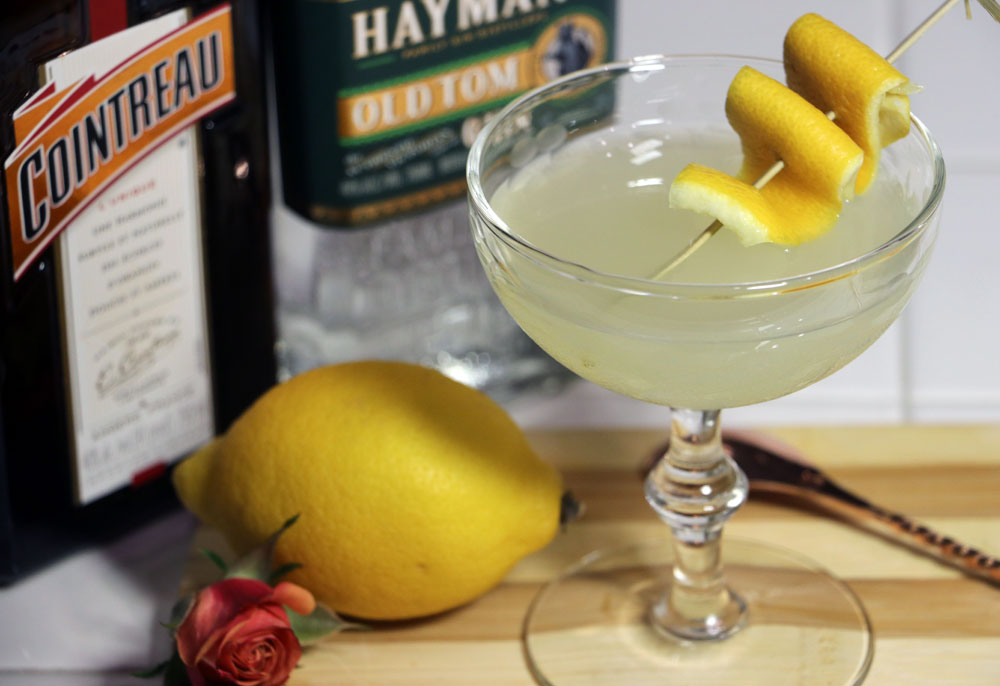Like the Boston Sidecar recipe from weeks back, tonight’s Mr. Boston’s recipe replaces the classic Sidecar spirit, Cognac, with Gin.
Believed to have been invented around the end of the first World War, the Sidecar cocktail made its print debut in 1922. The original recipe was published by Harry MacElhone, and calls for Brandy as the base with equal parts lemon juice and Cointreau. Beneath the recipe, Harry credits “MacGarry, the popular bar-tender at Buck’s Club, London” for the creation.
The Chelsea Sidecar appears to be a Mr. Boston exclusive, favoring “Old Mr. Boston Dry Gin” to Brandy. At first I thought the switch to Gin was simply a nod to London’s Chelsea district. After looking into it further, it seems Chelsea is the birthplace of Beefeater’s London Dry and perhaps that is where this cocktail gained its moniker.
The first home to the Beefeater Gin Distillery was established on Cale Street in 1820 as The Chelsea Distillery. Beefeater’s founder, James Burrough, would not be born for another 15 years.
James began his career as a pharmacist and moved from his birthplace of Devon across the pond to Toronto, Canada. After nearly thirty years in the trade, James made is way back to Chelsea circa 1863 and purchased the Chelsea Distillery building for £400. Beefeater was discovered thirteen years later.

Beefeater Gin was named after the Yeoman Warder guards who protect London Tower.
By Adam Cuerden, Detroit Publishing Company (https://www.loc.gov/pictures/item/2002696943/) [Public domain], via Wikimedia Commons
Wanting the botanicals to come through the sweet / tart citrus and initially assumed I’d be using Tru Organic’s compound Gin for tonight’s recipe. Just as I was grabbing the amber colored spirit off our liquor shelf I realized we had that bottle of Old Tom that could also work. Mixing a teaspoon of each Gin with a teaspoon of Cointreau, the winner was Hayman’s Old Tom’s. The balance of the two spirits was perfection so I got to work on the full sized cocktail.
My finished Chelsea Sidecar consisted of:
- 3/4 ounce freshly squeezed lemon juice (one small lemon)
- 3/4 ounce Cointreau
- 3/4 ounce Hayman’s Old Tom Gin
After first discovering Beefeater’s connection to Chelsea, I recreated the drink using the 24 to see if it was as good as my first go around with Hayman’s. While the drink was good, the Gin did not carry through as well as the Old Tom did. Both Chelsea Sidecar cocktails were enjoyable but if I had my choice, the Hayman’s would be my choice.
In putting the finishing touches on tonight’s post I came to realize that Hayman’s was also founded by James Burrough. Turns out, my original guess was on the money after-all! I think I might be getting the hang of this 🙂

